What shoes do you deadlift in? Do you have actual deadlift shoes, or do you pull in regular sneakers? Perhaps you use your Oly shoes, or maybe you just pull barefoot. Does it even matter?
It does matter! You should be just as concerned with what shoes that you’re wearing when deadlifting as you are when you snatch, jog, hike, bowl, whatever. Footwear can have a big impact on performance and comfort no matter what activity that you’re engaged in, and this includes weight training. Sure there are some lifts where comfort is just about all that really matters, but with the deadlift it’s different; you could be missing out on some serious kilos or pounds simply because you’re wearing the wrong footwear.
In this review article I’m going to discuss a number of shoes that work well for deadlifting. I will focus primarily on the SABO Deadlifts, Reebok CrossFit Lite TRs, and the Chuck Taylor All Stars, but I will also tackle deadlifting in Olympic weightlifting shoes, Adidas Superstars, Nike Metcons, and even deadlift slippers. If I can keep the article length down I’ll also try to include wrestling shoes.
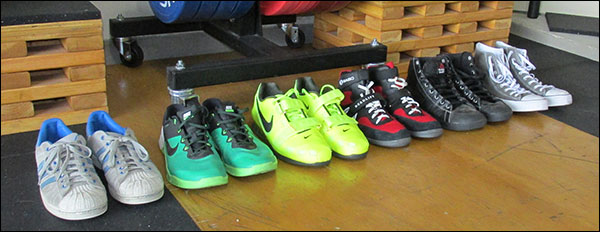
Update January 2018. I reviewed the new SABO GoodLift Powerlifting Shoes here. I really recommend checking out that review if those appeal to you more than the SABO Deadlifts.
What To Look For in Deadlift Shoes
So what exactly do we want in deadlift shoes? The following features are a great place to start:
- We want the sole to be flat so that there is a nice, stable connection with the floor. Many sneakers and athletic shoes have a rounding upwards of the toe and/or the heel, which reduces stability.
- Thin soles are best for deadlifting. The higher we are off the platform the less stable we tend to be, and the further we have to pull the bar to lock out.
- The insole should offer good arch support and enough comfort to have on for an entire training session, while also being firm enough to not compress and deform under heavy loads.
- We want the tread pattern and outsole material to offer good traction. This is especially true for wide-stance lifts like the sumo deadlift.
- Most of the best shoes for weight training (both Olympic and powerlifting) have at least one lateral (metatarsal) strap in addition to the laces to further secure the shoes to your feet. Anybody who owns a pair of good Oly shoes knows how secure the lateral straps make the shoe, and they aren’t even high tops.
Just FYI, if your current deadlifting shoe of choice isn’t included in this article but it has the majority of the features from the above list, you’re probably in pretty good shape.
The Best – SABO Deadlift Shoes
Of all the available shoes discussed in this review, the SABO Deadlifts are going to be the best overall shoe for deadlifting and powerlifting in general. This probably doesn’t come as too much of a surprise being that they were developed specifically for deadlifting, but at the very least it’s a confirmation.
What makes SABO Deadlift Shoes so much better than anything else? Well they just have everything that a deadlift shoe should have, including:
- Super thin 2-5 mm sole that puts you about as close to the ground as possible while still wearing shoes. Again, a thinner shoe equates to less pulling distance.
- SABO soles are completely flat; there is no rise in the toe or heel (image below).
- SABOs have two lateral straps and a ton of lace holes that allow for fine tuning of the tightness around the foot, ankle and heel.
- The fact that they are high tops contributes to overall stability of the foot and ankle.
- SABOs have side support in the outsole that allow you to spread the floor without worry of the shoe rolling, or busting at the seams.
- The soles are non-compressible; they’re firm, but comfortable.
- SABOs are just as solid for squats as they are for deadlifts, and they are comfortable enough to wear for an entire work-out (assuming you don’t prefer a heel for squats).
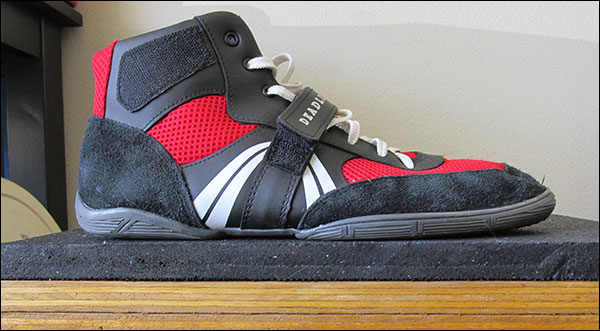
That’s a flat shoe, and it’s only 5 mm thick at its thickest point. Not a bad looking shoe either.
SABOs sell for $90 a pair, and for a specialty shoe that’s pretty reasonable. If you disagree, consider this: Romaleos and AdiPowers MSRP for about $200 a pair. While you could wear either of these Oly shoes off of the platform, would you? Probably not, so $200 for a pair of shoes you can do a couple lifts in doesn’t seem ideal, yet Romaleos & AdiPowers sell very well simply because they are the best equipment for a particular job.
SABOs may not be too useful for snatching, but you can deadlift, squat, and move around a gym doing your accessory work in comfort. That is, for $90 you get a specialized shoe for powerlifting; the best equipment for this job; and you don’t have to take them off for “the rest of your workout.”
Currently there are three colorways available; red, black, and blue. Like I’ve mentioned they are comfortable, affordable, and they do exactly what they are designed to do. It is also my understand that Max Barbell is the only place to order these in the United States (SABO is from Russia). Sizes are indeed Russian, but there is a very simple conversion chart on the product page. I managed to figure it out and get the right size ordered, so I’m sure you can too. I highly recommend these shoes if you can afford the $90, as these are the best.
Pros: super thin and flat 2-5 mm sole; incredibly secure fit due to metatarsal strap, good traction and side support for “spreading the floor”, ankle stability, high comfort & excellent breathability, just as useful for other lifts, attractive design, multiple colorways, great price.
Cons: The plastic on the laces wasn’t very stiff, so lacing through the first couple holes that don’t have eyelets was a hassle, limited sizing (the very small and super large may not find a size.)
Most Popular – Converse Chuck Taylor All Stars
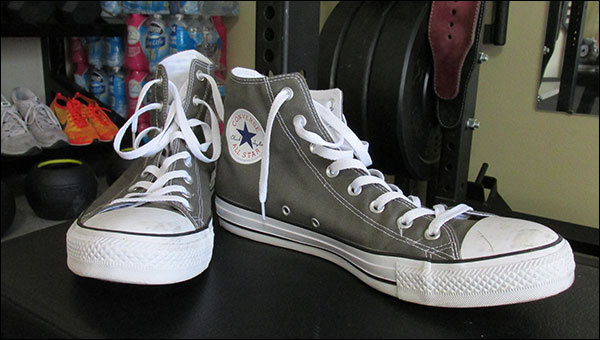 Chuck Taylor All Stars are a very common strength training shoe, and while they’re not my favorite, I will concede that they are a decent shoe for beginners and for those on a budget. Chucks are affordable (about $45), comfortable, lace up tightly and conform to the foot well, and they are flat enough. They have relatively good grip on rubber gym flooring (as do most shoes), but because of their excessive sole height and awkward tread pattern, stability and traction isn’t amazing.
Chuck Taylor All Stars are a very common strength training shoe, and while they’re not my favorite, I will concede that they are a decent shoe for beginners and for those on a budget. Chucks are affordable (about $45), comfortable, lace up tightly and conform to the foot well, and they are flat enough. They have relatively good grip on rubber gym flooring (as do most shoes), but because of their excessive sole height and awkward tread pattern, stability and traction isn’t amazing. 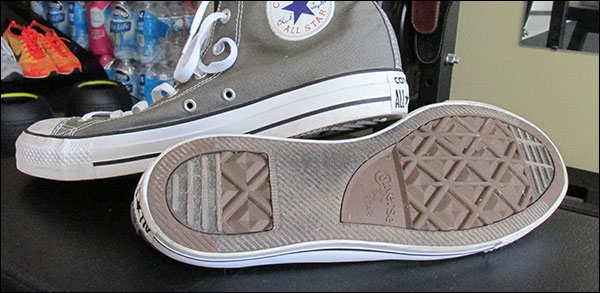
Bottom of Chucks – multiple tread patterns & two different sole materials of varying depth. Well they certainly weren’t designed for powerlifting.
Chucks aren’t ideal for sumo pulls or other heavy, wide-stance lifts due to the flimsiness of the canvas. Spreading the floor week after week will eventually lead to the side of the shoe blowing out. Matter of fact Chucks simply don’t take a whole lot of any abuse before starting to come apart; I dare say even when worn casually outside of the gym.
The argument for buying such a mediocre shoe seems to simply be because Chucks are so cheap that most people can afford to replace them time and time again when they fail. This argument might make sense if Chucks performed better, or if good shoes were actually cost prohibitive, but neither are accurate. You can buy less than two pairs of Chucks for the cost of one good pair of powerlifting shoes. The only other advantage I can think of besides cost is that Chucks are more versatile than powerlifting kicks, which I suppose is great if you are a fan of skateboarding in the gym.
When it comes down to it Chuck Taylors aren’t the last shoes in the world that I’d suggest, but they definitely aren’t the first. You’re better off with a pair of CrossFit Lite TRs, or ideally the SABOs. Plus, and perhaps this is just me (probably is just me), but I find All Stars to be about the ugliest shoes – and that goes double for the high-tops.
Pros: affordable, relatively flat sole, tight fitting, good comfort for longer training sessions, versatile.
Cons: poor durability, not very supportive (mid and high tops add no value really), sole is both thick and compressible, weak traction (no “spreading the floor”), lacks style.
The Close Second – Reebok CrossFit Lite TR
Of the entire Reebok CrossFit and lifting shoe line-up, the CrossFit Lite TR is the closest in design to a true powerlifting shoe. Matter of fact this shoe probably should have just been labeled and promoted as a powerlifting shoe rather than a CrossFit shoe, as they share far more traits with the SABOs or Chucks than they do with Nanos or Metcons.
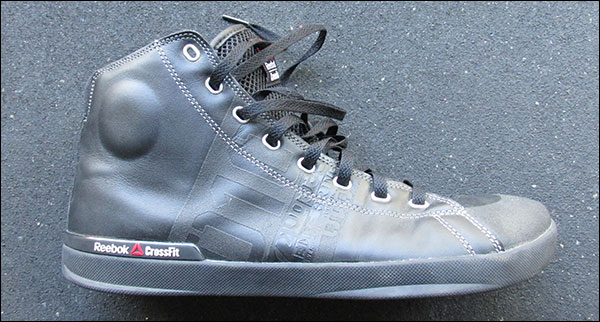
The Reebok Lite TR Trainers are a solid deadlift and squat shoe. They offer better ankle and side support than Chuck’s, can be laced up tightly and securely, and they provide a very flat, wide & stable base for heavy lifts.
I can confidently tell you that the Lite TR is a much better deadlifting shoe than the Chucks. Unlike the Chuck Taylors, the Reebok’s are leather *, and they feel far more substantial and supportive than the light canvas Chucks. The Reebok’s also have a super flat, wide outsole (with flanges even) that makes for a much more stable foundation for driving your feet. The Reebok’s also have side support (the “stability zone”) that allows for you to spread the floor without having to worry about your foot busting through the side of the shoe after a couple months of use. If that’s not enough, the CrossFit Lite also has a thinner yet firmer sole and provides significantly more traction.
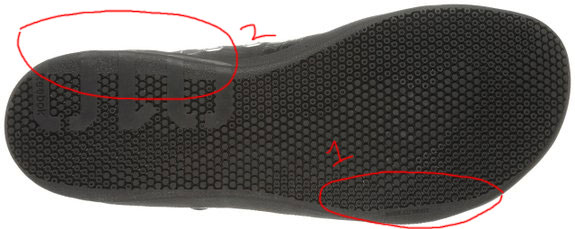
Both of these areas of the shoe are flanges that make the sole wider and more stable when spreading the floor. Reebok refers to area 1 as the “stability zone”
Really it is night and day between the Chucks and the Reebok Lite TRs. The only thing that the Chucks have going for them is that at retail they cost about half as much (about $45 vs $90). Update: the Lite TR was discontinued sadly.
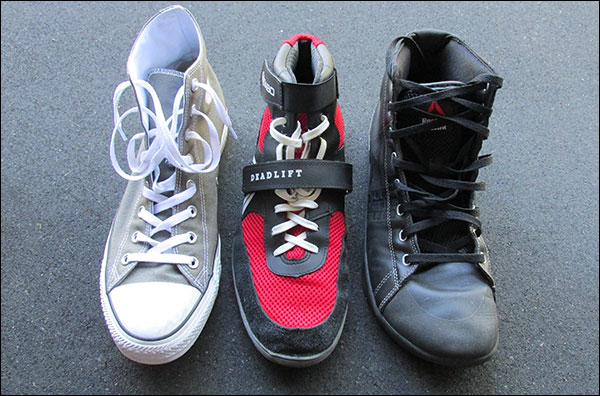
Some people have a problem with how spacious the toe box is on the Lite TRs. That extra thickness makes for a stable foundation, no doubt, but narrow feet will move around inside the front of the shoe. Also the Lite TRs were blister-city for me as they were getting broken in – very uncomfortable for a few weeks.
No major complaints though; overall a great shoe for deadlifts. I’d definitely wear the Lites over Chucks for powerlifting – no question about it. They are an infinitely better shoe, and they are a very close second to the SABO Deadlifts – or would be if you could still get them.
Pros: affordable on clearance (not even unreasonable at full price), flat and thin sole, side and ankle support (sumo friendly), secure fit despite no lateral straps, decent traction.
Cons: they are discontinued, toe of shoe is bulky and wide, sole is more compressible than SABOs, tread pattern picks up all kinds of debris, not very comfortable when new.
Olympic Weightlifting Shoes (Romaleos, AdiPower, etc.)
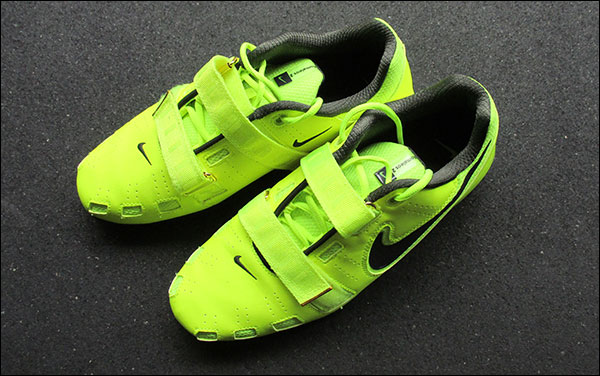
Some people prefer to deadlift in Oly shoes, and there is no shortage of discussion about the merits of doing so. Oly shoes actually have a lot going for them in terms of using them for deadlifts, as they have the majority of the features that you’d want in deadlift shoes – super flat, thin soles; metatarsal strap for a tight, secure fit; no sole compression; and so on. The obvious difference is that the heels of Oly shoes are raised.
One of the arguments against deadlifting in weightlifting shoes is that by raising the heel, you are effectively increasing the distance that you have to pull the bar (deadlifting from a deficit.) This doesn’t work out like it sounds though – raising your heel ¾” doesn’t equate to you having to pull the bar an additional ¾”. Plus, the earlier quad activation from lifting the heels up may more than make up for any difference in range of motion. Then again though, depending on your anatomy, it may be that lifting in any shoe other than flat shoes puts you personally at a disadvantage. To find out, all you can do is try.
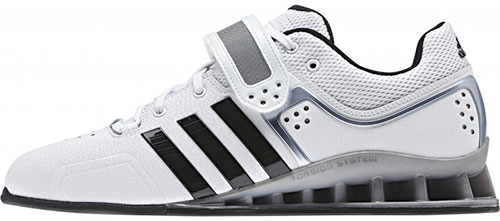
Adidas Adipowers have a single metatarsal strap, very thin and flat soles, and a raised heel ¾” high.
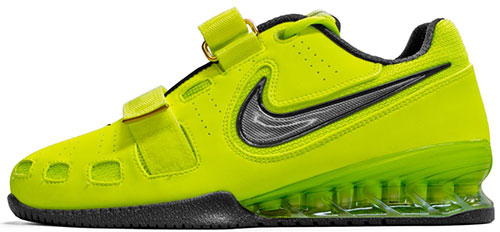
Nike Romaleos have two lateral straps, very thin and flat soles, and a raised heel ¾” high; same height as Adipowers.
Personally I don’t like to deadlift in Olympic shoes. I feel like the raised heel puts me too far forward for my height (as in a slight forward lean), and I don’t feel as strong when I’m out of balance (obviously). This is just my experience, and again all you can do is try for yourself.
If you don’t already own Olympic WL shoes because you don’t train the Olympic lifts as part of your programming, I don’t suggest running out and buying a pair just to experiment with deadlifts. Good Oly shoes run about $200, and even the cheap Oly shoes sell for more than Chucks, LTRs, wresting shoes, and even the SABOs.
Below is a very thorough and technical video on the subject of deadlifting in Olympic shoes versus flat shoes.
Pros: locked-in fit, flat soles, thin soles, metatarsal strap, raised heels, multiple brand and color options.
Cons: most expensive lifting shoes, poor traction for wide-stance lifts, uncomfortable off of the platform, not everyone will benefit from them outside of Oly lifts.
Functional Trainers – Nike Metcon 2
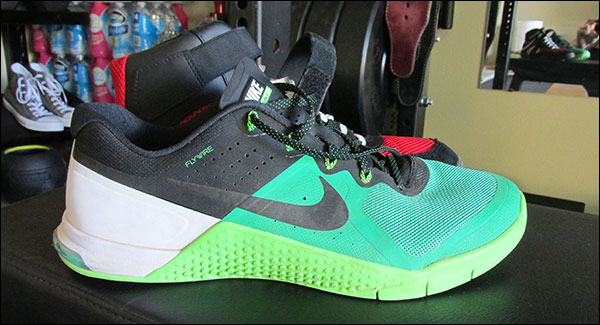
Nike Metcon 2 sitting in front of a SABO Deadlift Shoe. Metcons are much bigger and taller than they look like in the product pictures.
For starters, the bottom of the shoe is ultra flat with a slight heel-to-toe drop (about 4 mm), and the rubber outsole material provides excellent traction. It’s a very stable shoe. Metcons also fit very snugly around the foot thanks to Nike’s fancy flywire technology. Even without a metatarsal strap it’s easy to lock these shoes down and eliminate foot movement inside the shoe. Finally, the firm foam insoles offer really good arch support which contributes greatly to their high level of comfort and stability. So while not actually deadlift shoes, they will still function moderately well for deadlifts.
One of the drawbacks of deadlifting in Metcons is the height of the shoe. It’s hard to tell in pictures, but the Metcon is a pretty big shoe; your foot is actually quite high off the ground (look at the size of the insole in the image below). Since there is no side or ankle support, this height makes the Metcon slightly less stable and less than ideal for wide-stance lifts. I don’t think this changes conventional pulls much (it doesn’t for me), but unlike the high heel in Oly shoes, you literally are deficit pulling while wearing Metcons.
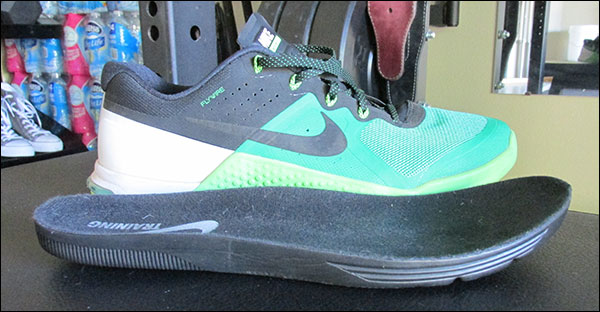
While the issues with deadlifting in Metcons are minimal, the high price compared to actual deadlift shoes like the SABOs makes them less appealing ($130 vs $90). In other words, I don’t suggest running out and buying a pair of Metcons just for deadlifting if you don’t also WOD or have another use for them. Even running sometimes isn’t enough justification for owning Metcons considering that the one thing Metcons just totally suck for is running and jogging.
Still, if you’re a CrossFitter and strength trainer and you’re looking for a shoe to cover both of those activities, the Nike Metcon 2 may be a better option than the Lite TR.
Pros: good arch support, raised heels, super flat & wide soles, firm but comfortable insoles, solid tight fit, good traction, versatile, lots of color choices.
Cons: fairly expensive, zero ankle support (no support straps), thick soles = tall shoe, kind of irrelevant… but they suck for running.
Sneakers – Adidas Super Stars
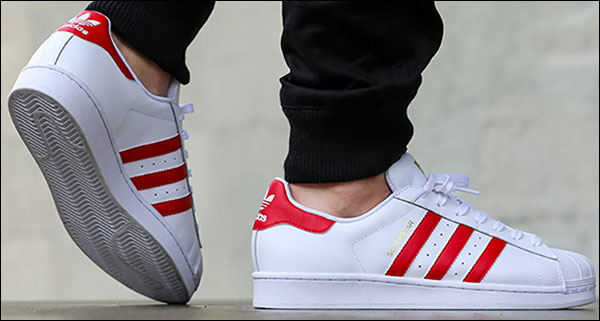
For all-purpose training shoes, Superstars are my personal version of Chuck Taylors. There really isn’t any rhyme or reason behind this beyond the fact that I’m a huge Adidas fan, but as I’ve thought about it it does make sense that they would work well for training – including deadlifting.
Adidas Superstars are a comfortable, basic sneaker. They fit snug and comfortably, breathe well, offer good support, and the bottom of the shoe is completely flat. Whether actually designed well or just a fluke, they also stay together rather well. Of all the Superstars that I have gone through in my life, I’ve never actually destroyed a pair. In the “for what it’s worth” department, Superstars are also a bad ass looking shoe available in an unlimited number of colors.
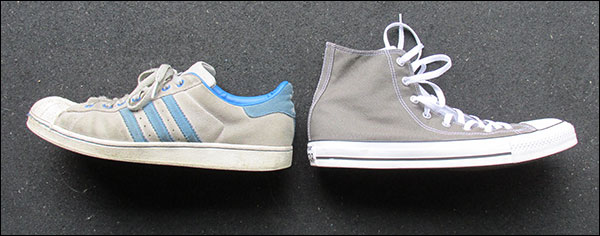
About the same sole thickness and same rate of sole compression, and despite only not even being a high top, the Superstars feel just as supportive.
Only a handful of Superstars that are available at any given time are high-tops, which is a bummer because the high-top Supers are basically improved Chucks. In any case, I’m not suggesting you buy an $80+ pair of Adidas shell toes over something like the SABOs, but you may have a pair (or a similar sneaker) lying around that might be worth strapping on for a set of deads. You never know, they may fit the bill for you, and you’d have no need to go out and spend more money on new shoes.
Pros: good arch support, flat & wide soles, comfortable, solid tight fit, decent traction, super versatile, nearly unlimited color choices.
Cons: soft insoles (compressible), no ankle support or straps, fairly thick soles, relatively expensive considering overall usefulness in the weight room.
Deadlift Slippers (Deadlift Socks)
I had never tried deadlift slippers prior to writing this article. I wanted to include them though so I broke down ordered a pair.
So they say that deadlift slippers are the closest that you will get to pulling barefoot without actually being barefoot. The benefit of slippers is supposed to be that you’re only about 1/8″ from the ground rather than a whopping 1/4″ or more if you were wearing good shoes. The problem that I personally had is that I never felt stable in them.
I wear a size 12 shoe, so I bought the largest size (which included size 12), but they still felt too small. They fit fine, but my feet felt as though they were hanging off the mini rubber pad in multiple places, and my feet aren’t that wide. So for me, any benefit of being close to the ground was lost to the effort of trying to stay centered and stable on that small, foot-shaped, rubber pad. I didn’t care for them.
I want to think that I gave them a pretty fair shake. I tried them for a ton of sets; both warm-up and working sets; but yeah, at no point did I even remotely enjoy using them. Matter of fact I disliked them so much that I never bothered to try them for a second workout. Having said that, reviews for these deadlift slippers are really good, so my experience is obviously not indicative of everyone else’s. You may like these, but even if you don’t, you’re only out $12.50.
Pros: affordable, rubber pad has great grip, very thin (4 mm).
Cons: no foot, ankle, or heel support whatsoever, no stability, lateral stress can cause the slippers to roll, rubber may stick to floor but there is nothing to keep your feet on the pad, cheap quality.
Wresting Shoes (ASICS Matflex)
This article has gotten much longer than I expected it to, so I will just defer to KoreanIrons review for now. He refers to a previous version of the Matflex, but you’ll get the idea. FYI: If you buy wrestling shoes, pay close attention to sizing feedback as they tend to run small.
Deadlifting Shoes – Conclusion
SABO Deadlift Shoes are really the way to go. They just have everything that you’d want for deadlifts, and unless you squat in Oly shoes, the SABO will probably end up being your go-to squat shoe as well. They’re just a great shoe at a reasonable price, and they are my top recommendation.If all you care about is spending as little cash as possible, go with the Chuck Taylors, a pair of wrestling shoes. You’re really not saving that much cash being that SABOs are not horrendously expensive, but to each his own. Also expect the Lite TR to be re-released in 2018 (hopefully.)

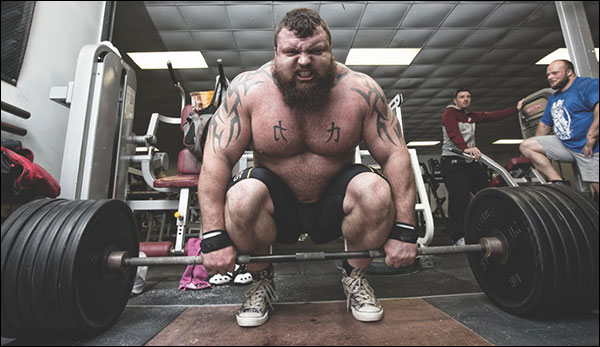
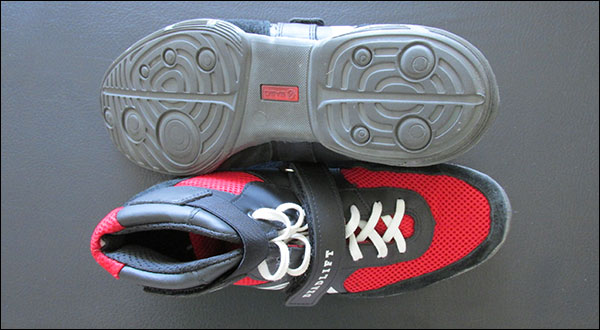
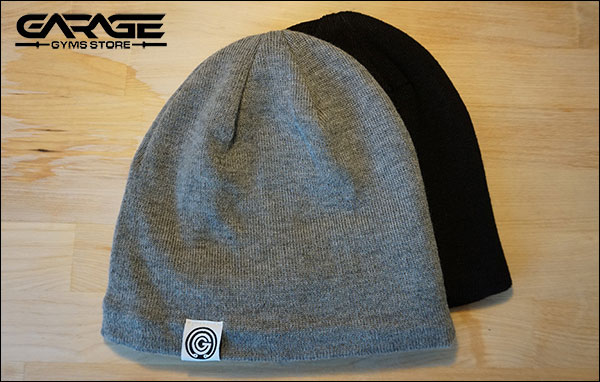
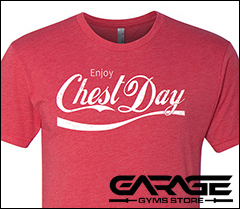
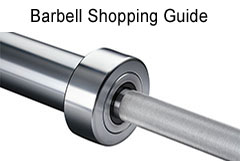
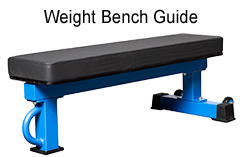
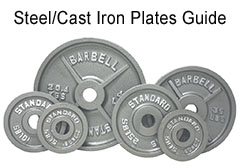
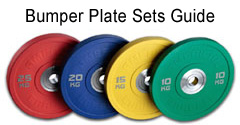
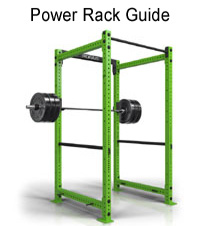
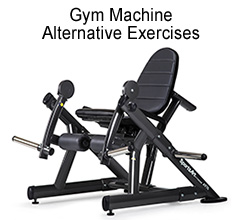

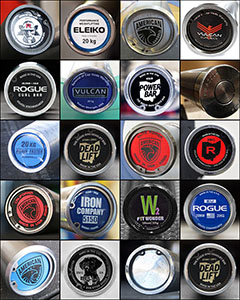

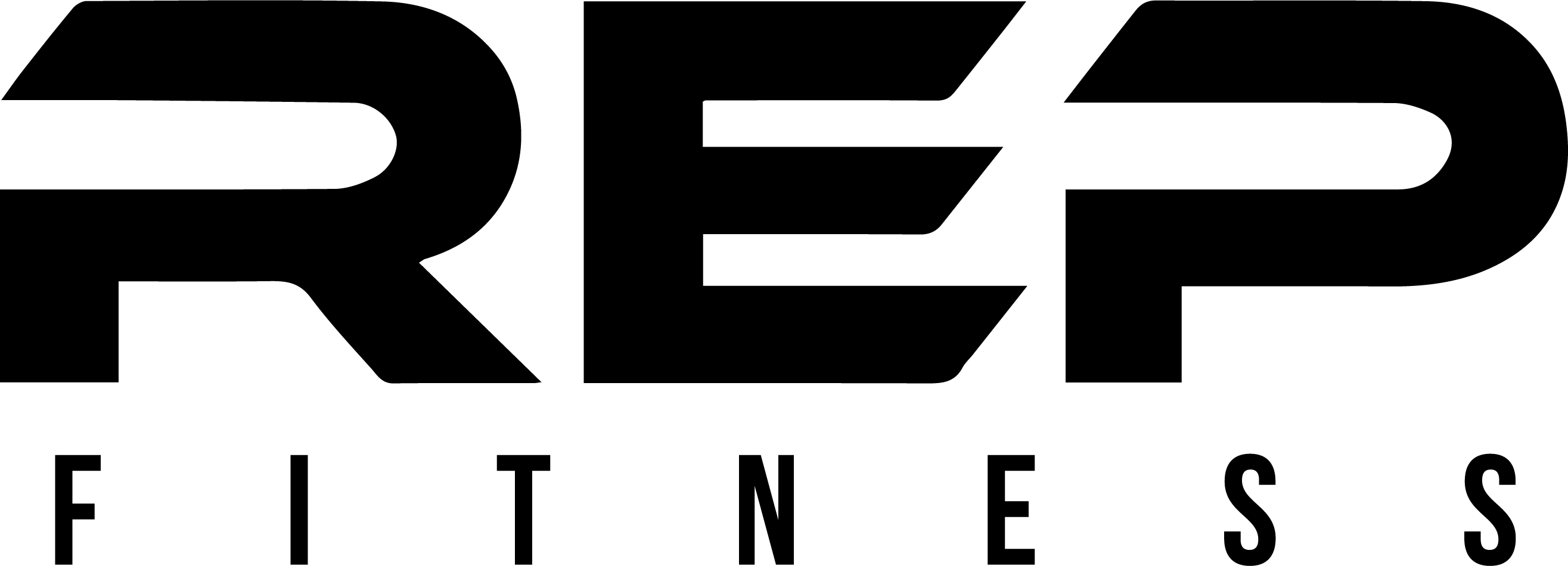
Metal (Finnish company; the Finns have a reputation as monster deadlifters) makes a squat/powerlifting shoe that is like Sabos on steroids. I own both and there is no comparison. The soles on the Metal squat shoes require some Freesole or Seamgrip to avoid peeling, but you should do that to all your shoes anyways (I’ve used it on my Adipowers as well). The construction, however, is bombproof in every other way. Take the Reeboks and re-engineer them for guys that squat & pull over 1000lbs. Presto, Metal shoes. They take quite a while to break in (duh?) but there is nothing else like them on the market once you do. Incredibly stable, can be laced high or low, a brutally strong metatarsal strap in exactly the right place — about the only drawback is the price ($149 last I checked). But as with most things in life, you get what you pay for.
Yeah I left those out because I couldn’t get them in a reasonable amount of time to review them, plus they were full price $189 last time I looked at them (they’re on sale now of course, $169). I also figured that folks deadlifting 600+ pounds wouldn’t need me to tell them about Metal PL shoes… if you know what I mean. I’ve been incredibly tempted to pick up a pair whether I review them or not though, but I’ve been spending a little too much on bars again. Eventually I will, I just know it.
I’d never even heard of deadlift shoes. I just use Nanos. I definitely don’t do deadlifts in my lifters.
I don’t think that you’re alone there, Alex. Have you ever even tried deadlifting in your Oly shoes?
Put me in the category that loves Oly shoes. The deadlift is my favorite lift, so I was hesitant to make the change. I did a ton of research before buying Romaleos, and I wasn’t sure I’d like the heel on deadlifts. I thought I’d give it a try, though, and I’m really glad I did.
Definitely a case-by-case thing, but I’d encourage people to try it if they can. I feel I have a more solid base and a tighter pull. Worst case scenario, you use them on your other lifts (and you’ll get your money’s worth on squats alone). They’re built like a tank, too, so it’s $200 up front, but they’ll last a long time.
Great write-up, by the way. Your unbiased approach to reviews is a nice change from the usual clickbait hyperbole found around health and fitness. It’s nice to read an article that says something other than “always do this” or “never do that.”
Thanks Cody, appreciate that.
I completely agree about how tight everything feels in Oly shoes. There’s definitely a feeling of being anchored to the ground. If I could compensate for the forward lean without sacrificing strength, I’d be all about them. It may even be worth training for, but I have been digging the deadlifting shoes so there hasn’t been much motivation for that. Someone really smart could probably figure out mathematically who would be most likely to benefit from Oly shoes, and who would likely suffer the most from them based on weird shit like femur and tibia length, height, mobility, etc… that’s not me though =/
I currently use a minimalist style running shoe for lifting. However I’ve been told no go you need a big heal for those squats. The SABO looks as if it has no raised heal. Is that true and if so what’s the scoop on squats and a heal?
More people squat in Oly shoes than deadlift in them, I dare say, but you won’t see many pro powerlifters in them, so that must mean something. I suppose if you take a narrow squat stance and rely heavily on quads rather than hip drive, they’d probably improve numbers. I guess it depends on how the movement feels for you in heels vs flats as well.
Does your running shoe have a lot of cushioning? If so, you don’t find being compressed into your shoe makes stability an issue as you approach max loads? I’m not exactly sure what minimalist means in terms of a running shoe, but I’ve got a couple pairs of I guess normal running shoes and the thought of trying to lift anything in them is actually kind of scary sounding lol.
My minimalist shoes have no cushion just a thin rubber sole so there is no compression.
I follow the Starting Strength book fairly wide stance and knees out.
Sounds like you’re wearing the right thing then
Looking forward to your Metal review :)
me too! Don’t hold your breath yet though… not yet.
So, I’ll ask the dumb question. How do the Olympic lifts benefit from a raised heel? I can’t wrap my powerlifting mind around that
The raised heel improves mobility in the ankles, allows you to get into a deeper squat, and makes it easier to keep your torso upright.
Powerlifting squats with that wide stance wouldn’t benefit from the heel. Even the low bar squat I don’t think gets much from Oly shoes because of how small the angle is between the trunk and the femur. That is to say, you can’t stay that upright in a low bar squat and stay in proper position (bar over mid-foot.) Still, I’m sure many low bar squatters use Oly shoes. I don’t, but I think I’m probably weird at my height and I never assume how I do anything is the “normal” way.
Thanks very much for the explanation, makes sense. I’ve been rocking the wrestling shoes for a decade now, but those sabo’s have me wanting to take a closer look
Did you watch the video at the bottom from that Korean Iron guy? It’s not the most in depth thing ever, but I thought it was pretty good. How many times have you replaced your wrestling shoes in that time? Like, how long would you say a pair lasts?
I did. Thought it was spot on. I’m on pair #4, so at about the 2.5 year mark, they get replaced. I’ve only had one blowout, which is really surprising, given that I mostly pull sumo and push hard as hell into the sides. The others were trashed due to the soles starting to get slippery. To be fair, I wear them around the house and for non-gym activities more than I probably should, so that certainly wears them down faster. But at $50 to buy, I don’t give it much thought. I kind of look forward to it, because the matflex usually don’t disappoint in the funky colors department
2.5 years is pretty good for any shoe that’s worn regularly, especially an athletic shoe. I may have to pick up a pair of the Mat 5’s and give them a whirl.
Posted on FB about the Metals and Ristos DL shoe. To me the Metals are way too expensive. I had a problem with the sizing, but the main issue I have is that the High top is way too stiff for squats. On the descent they really pinch in the bottom of the hole and yeah they have loosened up, but IMO they are not great for squats. If I were to order again I would get a size down. I suggest this to people with narrow feet( e.g. those who favor Adidad over Nike.
I also attempted to purchase the Risto DL shoe. It is leather, has a single meta strap and a flat wooden heel. I was stocked about them but canceled after 3 months of waiting. I thought that I was getting the runaround. I ordered in January and was still waiting in April. However, if you don’t mind the wait they look awesome and are on sale for around 140.00 I..Also,”crossfit’ is a discount code for 10 bucks off which amounts to free shipping.
Kudos for stepping into the shoe review game. I think it makes a lot of sense to break it down based on specific lifts. I don’t think everyone is at the level to need/want different shoes for different lifts but I’m sure the more advanced folks appreciate that level of detail. Hell, I do too, it definitely helps me understand the pros and cons of the different elements of shoe design that come into play. Also, I loved the video about the oly vs flat shoes on the deadlift. Those guys are actually pretty funny.
Yeah I liked that video. They were far more informed on that subject than I, they deserved credit for it so I opted to include the video than just reiterate their hard work.
Honestly, as much as I love trying and reviewing so many bars, I like the idea of expanding out a little. Takes more than a bar to train after all. Plus, a few pairs of new shoes still costs less than most bars worth reviewing!
Thanks for saying so though. I worked on that one a while. I think it turned out okay, but I never know for sure lol. Publish and pray
Your reviews are very good. Thank you for all the hard work. I kind of equate you to DCRainmaker of gym equipment reviews.
http://www.dcrainmaker.com/
Thank you Steve. I wasn’t aware of that site, but I’m checking it out.
Awesome review: thanks as always. Another cheap skateboard shoe that works well for me and that I prefer to chucks do to a less “lumpy” insole are vans. Authentics or others all fairly similar sole and pretty damn cheap. I also have ridden my skateboard to the gym more than once, so I may be biased. XD Worth a try if you stumble on a deal though, I do think they are a notch above cons for the same price (plus you’ll be set to shred in them).
Just picked up a pair of the SABO shoes! 60 dollars! Clearance sale going on. Just found your site yesterday, been reading through a lot. Great website, great info!
very nice, and thank you!
MAXbarbell still has some clearance Sabo’s for $60 with free shipping as of Labor Day weekend 2016. I have a blue pair heading my way. Once I get a chance to try them out, I’ll leave another comment.
Thanks again for this great site.
Thanks Robert
I’ve recently learned about SABO deadlift shoes and I’m interested in replacing my size 12 Van’s with them for squatting and deadlifting (the Van’s were super cheap and I was a beginner at the time). What size shoe do you wear for your regular shoes compared to the SABO’s? I ask because the recommended size based on a guide told me that I should get a size 9 or 9.5 and I am usually a size 11.5-12 in running and basketball shoes. My foot measurement from the guide I followed (http://www.powerliftingtowin.com/sabo-deadlift-shoe/) was about 271 mm, which is equivalent to shoe size 42 (Russian) and shoe size 9-9.5 (US).
Well I simply used the RUS to US sizing chart on the actual SABO product page. My size 12/12.5 converted to 45’s, which I ordered, and they fit. Looks like you’d be a 44. No way should you order down 2 whole US sizes – that sounds insane to me. Thing is though, Euro and Russian sizes are different so even if you follow the charts you may be “in-between” and have to send back. I mean, mine were perfect first time just going completely on the chart so I can’t imagine you could be too off using your normal size with that chart.
SABO has recently released the “GoodLift” shoes specifically designed for Powerlifting. While they are $129.99 on MaxBarbell.com, I’ve found them for $59.99 on eBay in new condition. Could you review those shoes and update the article?
I’ll take a look into doing that.
I looked at that listing though – it’s based in Kazakhstan, which could explain the cost, but I probably wouldn’t be the one to order them that way. MaxBarbell has sales all the time. It certainly would be nice if they had some competition in the SABO market, as they cannot actually be that expensive to manufacture.
I received them today. You get a tracking number the next day when it is posted and shipping took almost 3 weeks from Kazakhstan to Central Europe. The shoe box still had the official price of 21900 KZT (currency of Kazakhstan) on it, which is approximately 65 USD. I’ve checked the manufacturer’s site (sabosports.ru) where the shoes are 4195 RUB, which is also approximately 65 USD. So the eBay seller from Kazakhstan just sells them close to the original price while MaxBarbell.com charges 70 USD extra (though I don’t know what shipping to the US would cost since shipping to the EU was already 20 USD). The same eBay seller also sells the SABO Deadlift right now for only 40 USD (which matches 2465 RUB on sabosports.ru), which are 90 USD on MaxBarbell.com.
my grandson is a senior in college, and as a christmas present, he suggested weightlifting shoes. great, i can do shoes–um, i thought i could do shoes, but i am so confused with different articles, different shoes, i don’t get it, if you are doing more than one kind of thing, are y’all changing shoes before you go to the next thing????
i am talking to myself it’s all crazy.he says he’s doing”mainly squat, bench, deadlift and olympics” well that certainly messes up what i read, cause some of that calls for different shoes!!! can someone take a minute and put me out of my misery, and help me with this shoe hunt gone to hell.
thanks
None of you replied to grandma ethel, you monsters.
I never remember seeing that. Shit, I feel awful now. Sorry Ethel. I hope you sorted it out
The SABO are good but they also COME APART AFTER MODERATE USE. Expect them to last no more than 1 year before needing to be taken to a cobbler for maintenance on the metastarsal strap.
*moderator edited out the profanity*
I really like the More Mile Oly shoes for the price.
Mine were around 18 dollars shipped.
Tatata
Thanks again John! As soon as I figure out sizing, I’ll be ordering. Will be sure to order using the link directly from your site. Appreciate it man!